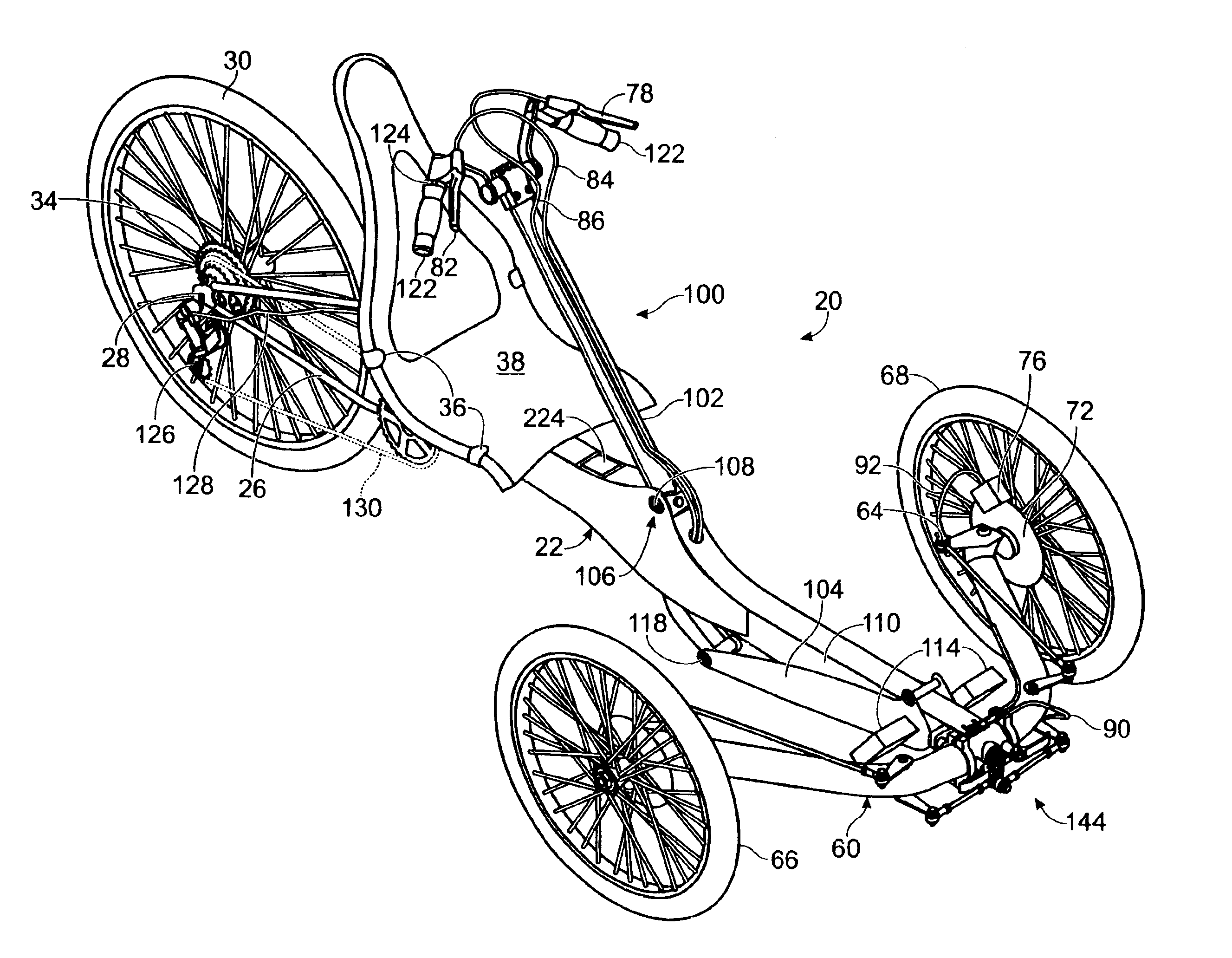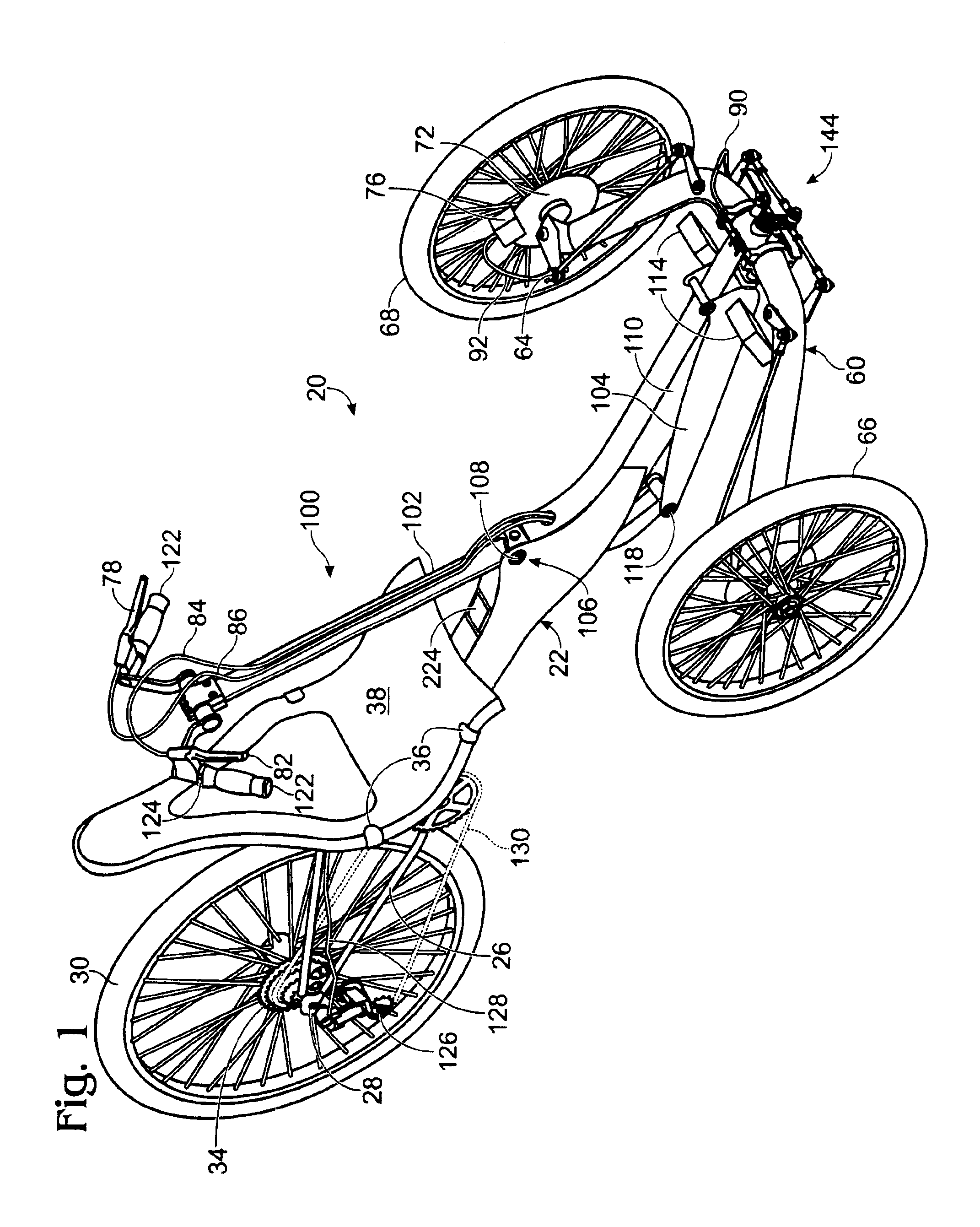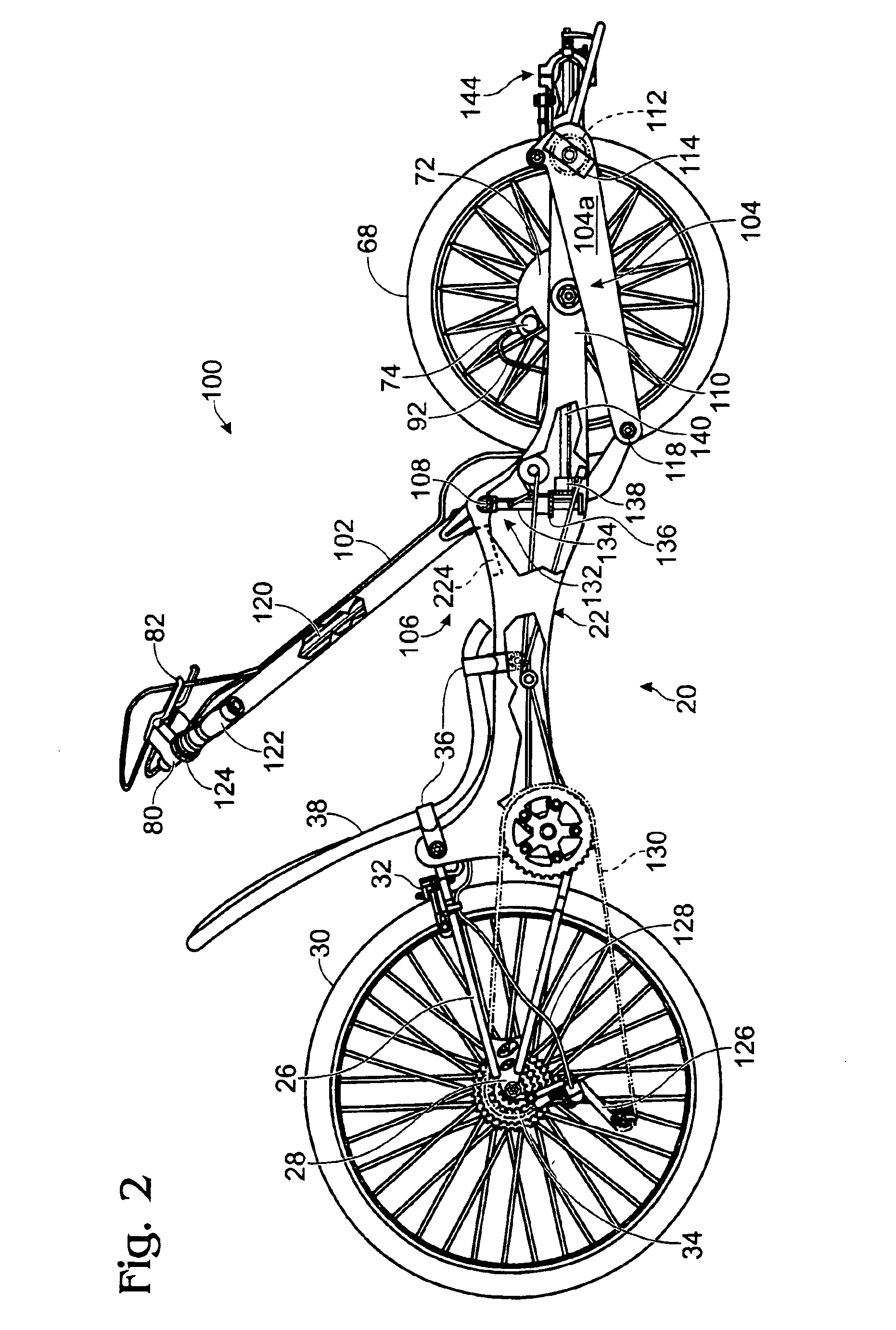Human-powered, ride-on vehicle
a ride-on vehicle and human-powered technology, applied in the direction of folding cycles, cycles, transportation and packaging, etc., can solve the problems of disproportionate size and strength, damage to the hpv and possible injury to the rider, and few fitness activities
- Summary
- Abstract
- Description
- Claims
- Application Information
AI Technical Summary
Benefits of technology
Problems solved by technology
Method used
Image
Examples
Embodiment Construction
[0018]As with the earlier U.S. patents, it is a goal of the human-powered vehicle described herein to enable a rider to use both upper body and lower body muscles to power the vehicle, while simultaneously providing a vehicle having a low center of gravity and frame geometry which is resistant to tipping. Additionally, the vehicle of this invention is suitable for use indoors as a stationary exercise machine, which provides upper and lower body resistance and an aerobic level of activity, and which may easily be converted to an outdoor vehicle for use as transportation and for recreation.
[0019]Turning now to the drawings, and initially to FIG. 1, a ride-on, human-powered vehicle HPV is depicted generally at 20. Vehicle 20 includes a main longitudinal frame member 22. Frame member, in the preferred embodiment, is formed of aluminum and steel components, and may include weight-reducing wasted areas therein, such as area 24, shown in FIGS. 4 and 7. The aluminum and steel components are...
PUM
 Login to View More
Login to View More Abstract
Description
Claims
Application Information
 Login to View More
Login to View More - R&D
- Intellectual Property
- Life Sciences
- Materials
- Tech Scout
- Unparalleled Data Quality
- Higher Quality Content
- 60% Fewer Hallucinations
Browse by: Latest US Patents, China's latest patents, Technical Efficacy Thesaurus, Application Domain, Technology Topic, Popular Technical Reports.
© 2025 PatSnap. All rights reserved.Legal|Privacy policy|Modern Slavery Act Transparency Statement|Sitemap|About US| Contact US: help@patsnap.com



